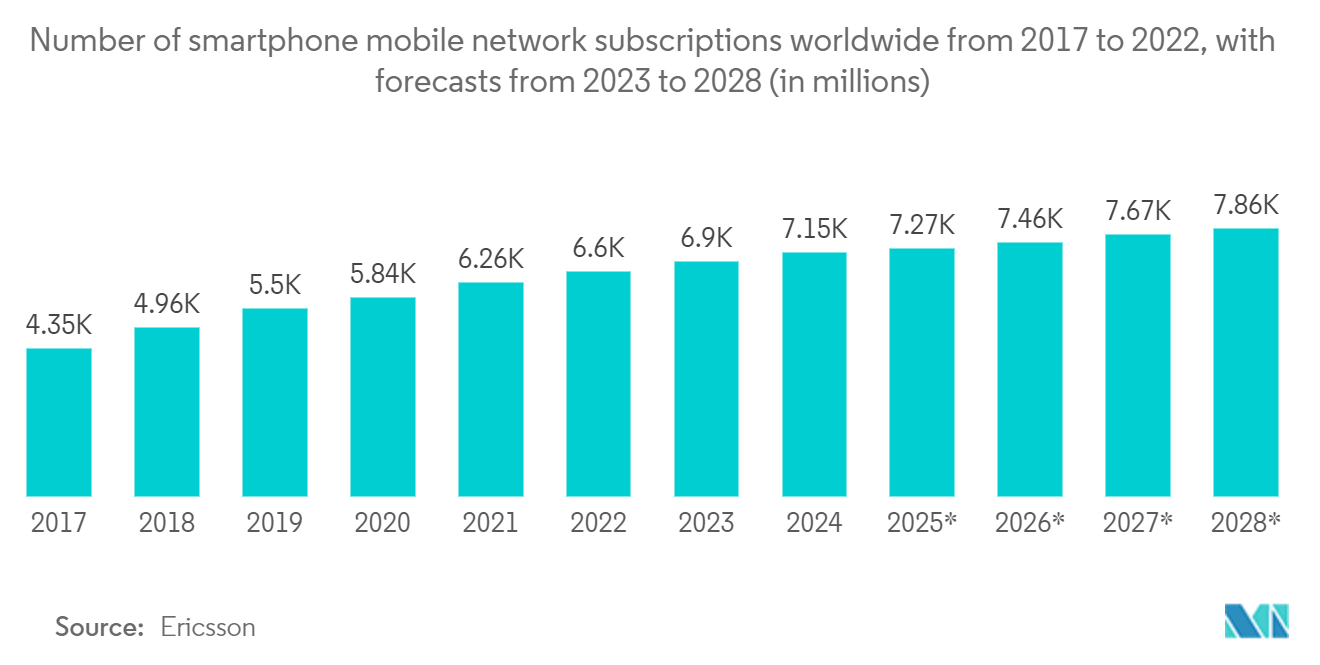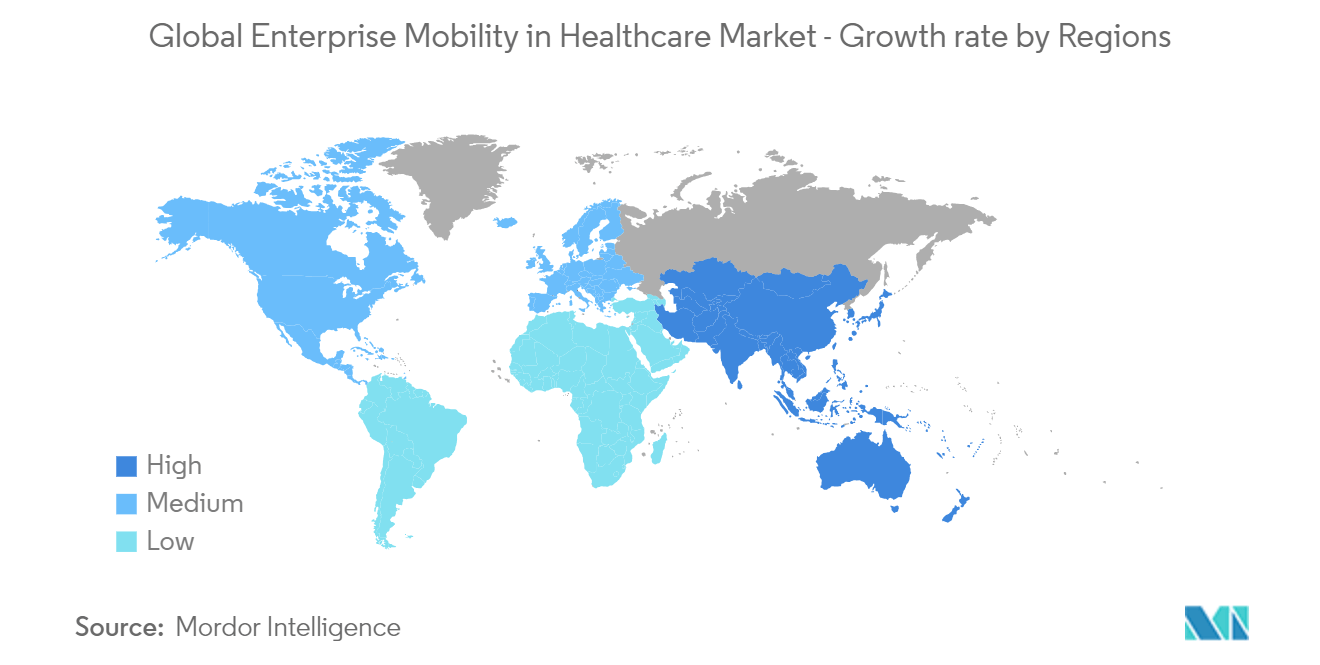Market Trends of Enterprise Mobility In Healthcare Industry
Growing Adoption of Smartphones In Healthcare Industry As The Preferred Medium of Accessing Information
- In the current scenario, healthcare providers conduct their day-to-day businesses using mobile devices or accessing cloud services. The shift in the industry towards enterprise mobility has resulted in increased employee productivity while using their own devices.
- The proliferation of smartphones has enabled quick and easy patient appraisals due to the presence of different embedded sensors. For example, healthcare providers can access the data from patients’ smartphones with healthcare apps to measure heart rates, blood pressure, glucose levels, and more.
- High regional expansion can be attributed to the increasing adoption of advanced mobile technologies and the rising demand for efficient healthcare delivery systems. Additionally, the region's robust healthcare infrastructure, technological advancements, and supportive government initiatives have further contributed to the flourishing market. Moreover, with the continuous advancement of mobile technologies and the growing focus on digital health.
- Besides, mobile health apps eradicate the need to visit a doctor during sickness physically. Eneterpise mobility management (EMM) healthcare solutions offer patients and healthcare providers a convenient way to access care remotely through chat, messages, and video calling. Remote patient care benefits countries and states with low access to healthcare and doctor-to-patient ratios.
- Mobile applications, the Internet of Things (IoT), and wearable devices use APIs to interact with other applications and systems. With real-time API-driven integration, one can make API-centric apps that monitor location, speed, and other parameters on the go.
- Real-time application integration helps data flow between apps in real time and data synchronization across numerous platforms, such as PCs, laptops, and other handheld devices. For instance, According to Cisco, 500 billion devices are expected to be connected to the Internet by 2030
- High regional expansion can be attributed to the increasing adoption of advanced mobile technologies and the rising demand for efficient healthcare delivery systems. Additionally, the region's robust healthcare infrastructure, technological advancements, and supportive government initiatives have further contributed to the flourishing market. Moreover, with the continuous advancement of mobile technologies and the growing focus on digital health.

North America Holds Major Share in the Market
- North America holds a significant share of the healthcare enterprise mobility market. Moreover, the region has a strong foothold on players operating in the market. Some include Cisco Systems, Inc., IBM Corporation, Microsoft Corporation, BlackBerry Limited, and Vmware, Inc., contributing to the market's growth. The vendors operating in the region are collaborating to improve digital transformation solutions further.
- Factors such as government initiatives for digital health, growing demand for better healthcare services, strict regulations regarding patient safety and patient care, and the proliferation of bring-your-own-device (BYOD) drive the growth of the healthcare enterprise mobility market in the region.
- According to IBM Corporation, over 80% of the stakeholders feel smartphones will become an integral part of the healthcare system shortly. Hence, with the growing number of mobile devices in healthcare facilities, the adoption of BYOD is expected to increase in the region. Over the past few years, BYOD has become a leading approach in healthcare settings that allows the implementation of patients' mobile devices in clinical trials and healthcare practice. The adoption of smartphones and tablets for accessing privacy-critical information is expected to drive the region's market over the forecast period.
- Furthermore, healthcare spending in the country is also driving market growth. According to the Bureau of Labor Statistics, the sector employs about 11% of American workers. Such statistics highlight the brimming potential for market growth in the region.
- High regional expansion can be attributed to the increasing adoption of advanced mobile technologies and the rising demand for efficient healthcare delivery systems. The region's robust healthcare infrastructure, technological advancements, and supportive government initiatives have further contributed to the flourishing market. Moreover, with the continuous improvement of mobile technologies and the growing focus on digital health.


